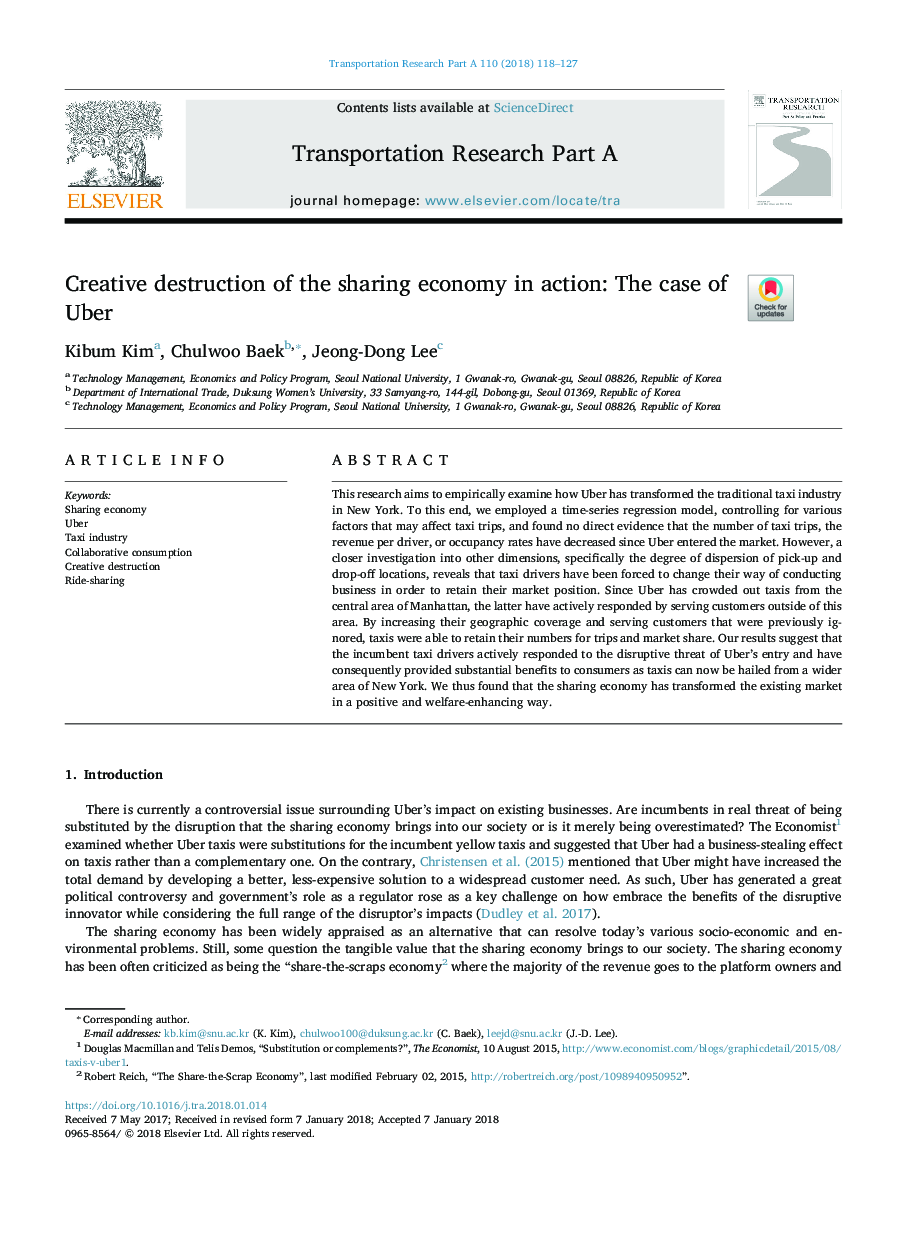| Article ID | Journal | Published Year | Pages | File Type |
|---|---|---|---|---|
| 6780422 | Transportation Research Part A: Policy and Practice | 2018 | 10 Pages |
Abstract
This research aims to empirically examine how Uber has transformed the traditional taxi industry in New York. To this end, we employed a time-series regression model, controlling for various factors that may affect taxi trips, and found no direct evidence that the number of taxi trips, the revenue per driver, or occupancy rates have decreased since Uber entered the market. However, a closer investigation into other dimensions, specifically the degree of dispersion of pick-up and drop-off locations, reveals that taxi drivers have been forced to change their way of conducting business in order to retain their market position. Since Uber has crowded out taxis from the central area of Manhattan, the latter have actively responded by serving customers outside of this area. By increasing their geographic coverage and serving customers that were previously ignored, taxis were able to retain their numbers for trips and market share. Our results suggest that the incumbent taxi drivers actively responded to the disruptive threat of Uber's entry and have consequently provided substantial benefits to consumers as taxis can now be hailed from a wider area of New York. We thus found that the sharing economy has transformed the existing market in a positive and welfare-enhancing way.
Related Topics
Physical Sciences and Engineering
Engineering
Civil and Structural Engineering
Authors
Kibum Kim, Chulwoo Baek, Jeong-Dong Lee,
